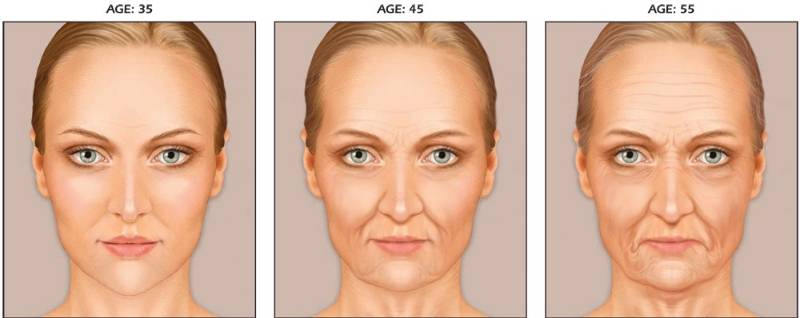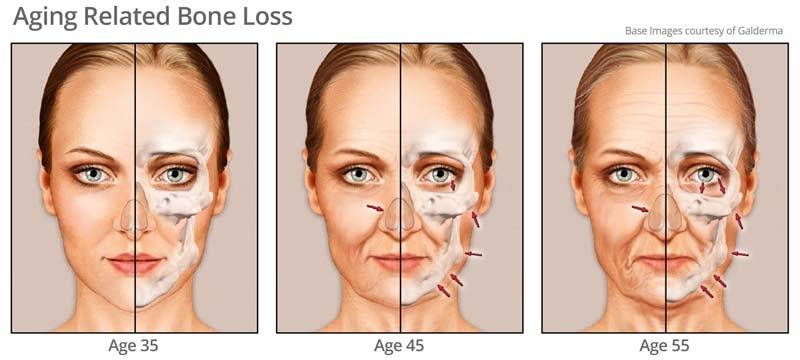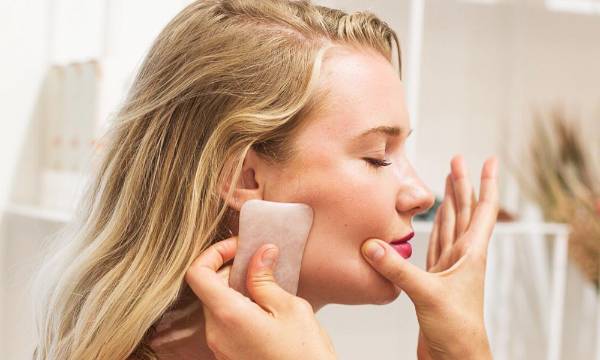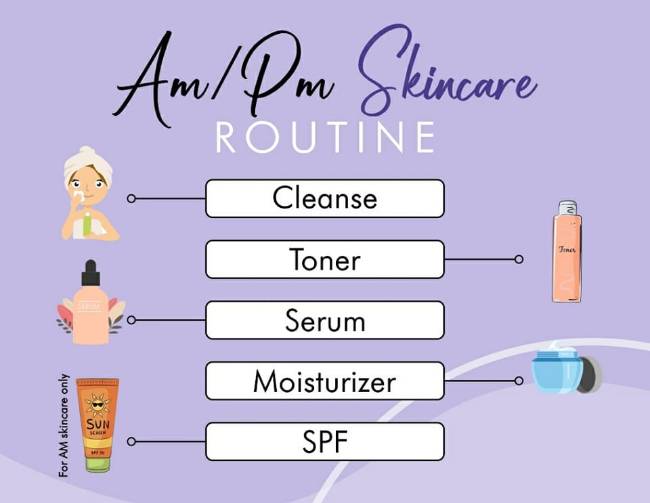In this comprehensive guide, we’ll delve into the science of skincare, exploring how to properly care for your skin, tailor your routine to your unique skin type, and select the right products for your needs. We’ll also unveil the secrets to effective anti-aging, empowering you to maintain a youthful complexion like your favorite celebrities and delay the visible signs of aging.

Why Does Skin Age? When Does It Begin?
The aging process is not a superficial phenomenon; it begins deep within the skin’s supporting structures, gradually affecting the bones, fascia, muscles, fat, and epidermis. Contrary to popular belief, aging doesn’t originate in the epidermis but rather in the underlying bones.
Skin Aging Timeline
- 20s: While some individuals begin showing signs of aging as early as 20, for most, this is the time when collagen production starts to slow down.
- 30s: By 35, many people experience the first visible signs of aging, including a loss of volume in the apple cheeks, more prominent brow and cheekbones, and the appearance of crow’s feet.
- 45s and Beyond: This marks the stage of deep aging, characterized by significant volume loss, deeper wrinkles, and sagging skin.

How to Fight Aging? Multifaceted approach
Bone Anti-Aging
The foundation of youthful skin lies in healthy bones. Starting as early as 20, incorporate calcium-rich foods and regular aerobic exercise into your routine to prevent bone loss, strengthen bones, and delay the aging process. Consider incorporating manual bone alignment techniques to further support bone health.

Fascia Anti-Aging
Fascia, the connective tissue that envelops muscles and organs, plays a crucial role in maintaining skin’s structure and elasticity. As fascia ages and loosens, it leads to sagging skin and fat loss.
To combat fascia aging, consider physical therapies such as dance, yoga, and bo jin, which can help realign fascia and reduce adhesions. Maintaining a positive mindset and practicing facial relaxation techniques can also contribute to fascia health.

Muscle and Fat Layer Anti-Aging
Fibroblasts are crucial in determining the loss of collagen protein in the fat layer, so increasing the vitality of fibroblasts is key to maintaining collagen. Supplementing collagen protein is an important method for anti-aging of the muscle fat layer. Fibroblasts can also be activated through radiofrequency instruments.
It is not recommended to consume large amounts of collagen-rich foods such as pig’s trotters or bird’s nest, as this only addresses symptoms rather than the root cause. Similarly, procedures like ultrasonic knives in beauty salons can stimulate fibroblasts, making the fat layer thinner and leading to side effects. Instead, regular visits to reputable hospitals for water light injections are advised.

Skin Texture Adjustment
Skin Types: Oily Skin, Dry Skin, Normal, Combination Skin (Oily T-zone), Combination Skin (Dry Cheeks), Sensitive Skin
Skincare Needs of Various Skin Types
| Skin Type | Characteristics | Skincare Needs |
|---|---|---|
| Dry Skin | Skin feels tight, prone to peeling during seasonal changes, fine lines easily develop around the eyes and mouth, lacks radiance and elasticity. | Primary focus on hydration, with skincare as secondary. |
| Oily Skin | Excessive oiliness, enlarged pores, rough texture, prone to acne, and severe blackheads. | Main focus on oil control, regulating sebum. |
| Combination Skin | T-zone and forehead prone to oiliness, other areas very dry, prone to peeling in autumn and winter, chin prone to acne, uneven sebum secretion. | Regulating sebum is the priority, with oil control in the T-zone and hydration for the cheeks. |
| Normal Skin | Smooth, radiant, elastic, balanced sebum secretion, rarely prone to acne, seldom experiences redness, itching, or other sensitive symptoms. | Normal skincare routine is sufficient. |
| Sensitive Skin | Thin stratum corneum, prone to redness, itching, and other symptoms. | Emphasis on nurturing, with a focus on moisturizing and repairing for stability. |
Hydration and Oil Balance
The most crucial aspect of maintaining skin hydration and oil balance is thorough cleansing.
It’s not recommended for oily skin to use foaming cleansers as they contain surfactants that can clog pores. Instead, opt for cream cleansers, which are gentler. The price of the cleanser doesn’t necessarily dictate its effectiveness; simpler ingredients are often better.
Oily skin can benefit from toners containing salicylic acid, which helps unclog pores. However, salicylic acid may cause slight irritation, so it’s advisable to assess your skin’s tolerance before use.
Skincare Daily Routine
- Steps: Cleansing – Toner – Facial Serum – Emulsion – Moisturizer (for better hydration) – Sunscreen
- Eye cream and eye serum selection depends on age-related needs. They have anti-aging effects and provide precise management for the skin around the eyes. Facial serums can also be used in conjunction.
- For oily skin, using only emulsion in summer and only moisturizer in winter is sufficient, but thorough cleansing is crucial.
- Sunscreen is an anti-aging product; it should be applied wherever there is light, except during sleep.

Quick Tip: Daily sunlight produces UVB and UVA rays. UVB affects the skin’s epidermis, causing freckles, spots, and sunspots on the face, while UVA affects the skin’s fibroblasts in the dermis, accelerating skin aging. Therefore, daily use of sunscreen containing both UVA and UVB protection helps delay skin aging.
3 Dimensions of Scientific Skincare
- Prevent: How to prevent factors like gravity and UV rays.
- Protect: Safeguarding the bone layer, fascia layer, muscle layer, and fat layer to delay aging.
- Nourish: Supplementing nutrients, such as taking calcium tablets, drinking collagen, etc.
Further Reading:
Discover Your Body Type & Dress to Impress! (With Pics)
Beyond Aesthetics: The Strategic Use of Color in Personal Branding
Find Your Perfect Seasonal Color Palette
5 Easy Steps to Create a Flawless Base Makeup
13 Global Renowned Brands & Their Sub-Brands
